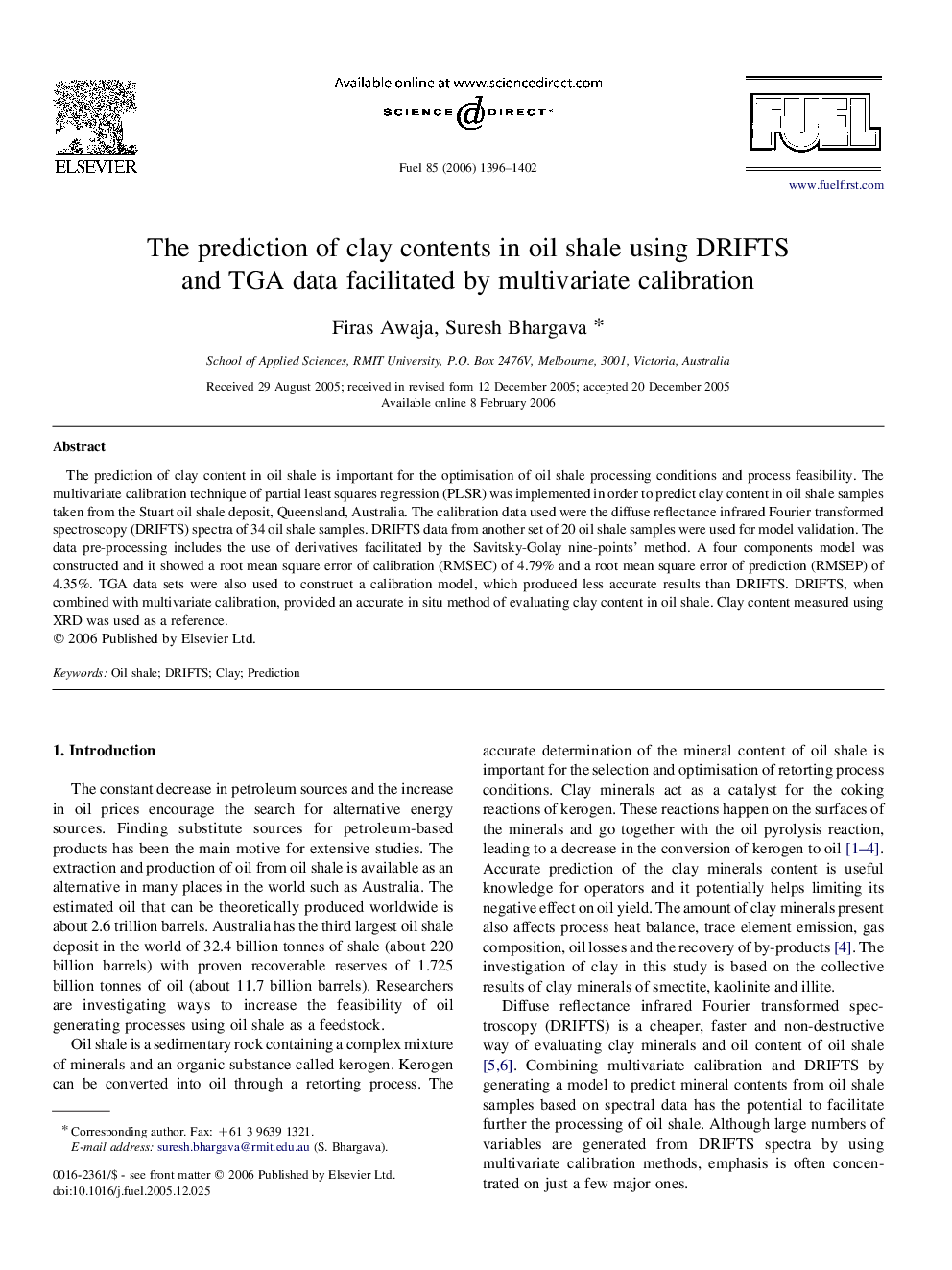| Article ID | Journal | Published Year | Pages | File Type |
|---|---|---|---|---|
| 208557 | Fuel | 2006 | 7 Pages |
The prediction of clay content in oil shale is important for the optimisation of oil shale processing conditions and process feasibility. The multivariate calibration technique of partial least squares regression (PLSR) was implemented in order to predict clay content in oil shale samples taken from the Stuart oil shale deposit, Queensland, Australia. The calibration data used were the diffuse reflectance infrared Fourier transformed spectroscopy (DRIFTS) spectra of 34 oil shale samples. DRIFTS data from another set of 20 oil shale samples were used for model validation. The data pre-processing includes the use of derivatives facilitated by the Savitsky-Golay nine-points’ method. A four components model was constructed and it showed a root mean square error of calibration (RMSEC) of 4.79% and a root mean square error of prediction (RMSEP) of 4.35%. TGA data sets were also used to construct a calibration model, which produced less accurate results than DRIFTS. DRIFTS, when combined with multivariate calibration, provided an accurate in situ method of evaluating clay content in oil shale. Clay content measured using XRD was used as a reference.
